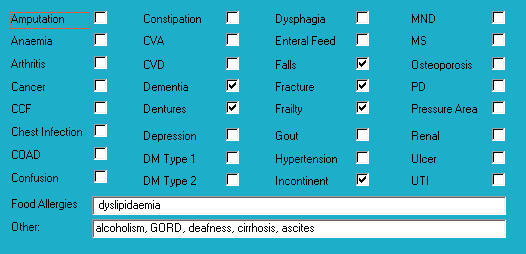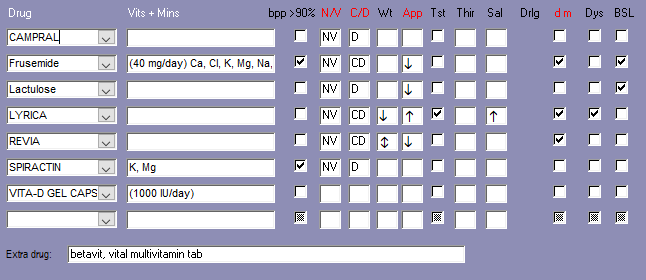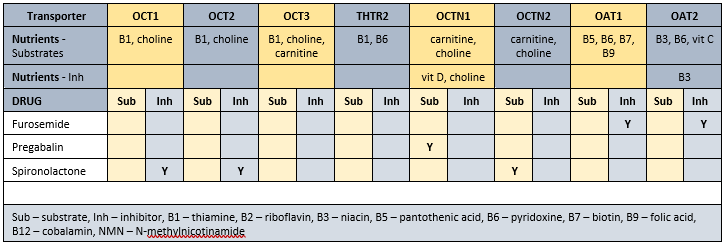Is there evidence of a levodopa +carbidopa and manganese interaction?
The total metal content and cellular compartmentalization of several key metals including manganese was examined in those with Parkinsons Disease (PD) (https://doi.org/10.1039/c7mt00244k).
The 3 regions selected in this study were because of their responses to Parkinson’s disease, and include -
- Substantia nigra - the primary site of the clinical movement disorder;
- Fusiform gyrus - associated with visual hallucinations;
- Occipital cortex – selected as an ‘internal control’.
Manganese (Mn) is an essential trace element important in many body functions, including neurotransmitter metabolism and antioxidant functions.
The evidence showed manganese concentrations were significantly higher in both healthy and diseased Substantia nigra than the other selected regions. These findings do not appear to have been subsequently challenged.
Speculatively, are the higher manganese concentrations due to environmental inputs? This is an especially pertinent question given occupational exposure to manganese has been found to cause a form of parkinsonism. Further, chronic exposure to high levels of manganese is associated with a a progressive neurological disorder that manifests similarly to PD, and is commonly known as manganism.
Industrially, manganese is important in steel making and non-ferrous alloys. At a manufacturing level manganese compounds are utilized in a broad range of processes, including the production of batteries, matches, fireworks, porcelain, glass-bonding materials and amethyst glass, pharmaceuticals, animal feeds, ceramics, anti-algal agents, bleaching, disinfectant, fungicides, fertilisers, food additive, food packaging, metal cleaning, nutritional supplement, ore flotation, plant nutrient, preservative for fresh flowers and fruits, purifying natural gas, tanning, textile dyeing and printing, welding, as an oxidising agent, as a catalyst in the chlorination of organic compounds, the production of manganese salts, and the manufacture and drying of paints and varnishes.
The levodopa + carbidopa and manganese interaction is a lack of physiological response to a levodopa + carbidopa-based intervention. One paper suggested a lack of response to a levodopa + carbidopa intervention is a likely predictor of manganese-induced parkinsonism.
Clinical Considerations
Not only is it important to know when there is an interaction between a medication and a nutrient, it is also important to know when there is not an interaction.
We also need to be aware of the extent of exposure to environmental inputs such as chronic high manganese intake in order to optimise treatment of those with formal PD, idiopathic PD, and manganism.
Clinical Questions
What actions will you initiate if levodopa + carbidopa is prescribed and there is a poor response?
Will you question whether there has been significant and/or sustained exposure to high levels of manganese?
Conclusions
Is there a levodopa + carbidopa and manganese interaction? To date, there is no evidence of a direct positive or negative interaction.

Medical History with Nutritional Aspect

Biochemistry with Nutritional Aspect

Medications That May Adversely Affect Nutritional Status

Transporter-mediated interactions and nutrients

Comments – medication and nutrition impacts only
Data summary
Biochemistry
Recent relevant available biochemistry indicates -
- low albumin – may alter availability of furosemide and spiractin therefore advisable to recheck status;
- low Mg – manifests as confusion, disorientation, personality changes, loss of appetite, depression, muscle cramps, tingling, numbness, hypertension, cardiac dysrhythmia, seizures. Is important in the activation of thiamine, vitamin D, vitamin C, and iodide. Magnesium is an intracellular ion therefore serum levels are unlikely to detect early depletion of status. Cellular magnesium status is unknown whilst magnesium levels within acceptable range however if magnesium levels are low then typically indicates significant cellular depletion and intervention recommended. Both furosemide and spiractin impact magnesium availability therefore advisable to recheck status and if still low then consider a magnesium intervention.
Glycaemia
Currently prescribed 2 medications that alter glycaemia.
Pharmaconutrition
Currently prescribed -
- 6 medications that include nausea, vomiting and diarrhoea as side effects;
- 4 medications that include altered appetite as a side effect;
- 3 medications that include hyponatraemia, hypokalaemia, constipation, dry mouth and thirst as side effects.
Coffee inhibits vitamin D uptake by osteoblasts (bone builders) by inhibiting their vitamin D receptors, and consequently decreases calcium and zinc absorption.
Currently prescribed vitamin D (1 tab/day). Advisable to check vitamin D levels and if still low then review current vitamin D management strategy.
Chronic use of Coloxyl + senna may promote excessive loss of water and electrolytes, especially potassium, and their regular monitoring recommended.
Frusemide increases urinary excretion of calcium, magnesium, potassium and sodium.
Spiractin impairs zinc status.
Two drugs decrease thiamine availability - being frusemide and spiractin however currently prescribed a high-dose thiamine intervention. Advisable to clarify current thiamine status.
Several of the identified membrane transporters inhibit the absorption and/or organ and cellular uptake of thiamine, choline, carnitine, pyridoxine, pantothenate, biotin, folate, niacin, vitamin C and vitamin D. Consequently, blood test results may be unreliable due to their prevention in entering or exiting relevant organs and cells. Advisable for blood tests to be conducted several hours after administration of relevant prescribed medicines.
Bowel management
Regular aperient prescribed.
Oral + anal PRN interventions prescribed.
No Nurse Initiated interventions administered.
Staff comments
Staff advise Mr ACT refuses to be weighed therefore indeterminate weight status.
Concern was expressed by staff about Mr ACT’s poor appetite; they also commented unreliability in information he provides.
Observations
Mr ACT is a small, slender, pleasant man who was lying in bed when I went to speak to him - he told me he is not eating much here, that he is a meat and veg man albeit cutup, that he enjoys desserts and milk drinks.
Mr ACT also referred to his flat and to some of his extended families’ difficulties.
A friend of Mr ACT advised 10 L fluid were tapped off last week.
Mr ACT told me the food does have an acceptable taste. However, given his acknowledged unreliability plus the prescription of furosemide, advisable to clarify zinc status.
Pharmaconutrition comments
Mr ACT’s diagnoses include falls - nutritional factors that may be contributing to his falls include -
- potassium - important in muscle function, currently prescribed furosemide therefore advisable to clarify status;
- calcium - more likely to be low if potassium or magnesium low; important in muscle function, currently prescribed furosemide therefore advisable to clarify status;
- vitamin D – associated with muscle weakness and consequently falls; currently prescribed colecalciferol therefore advisable to clarify vitamin D status;
- zinc – can decrease food intake through altered sense of taste and poor appetite, and consequently reduced muscle mass; currently prescribed furosemide therefore advisable to check status;
- magnesium - magnesium is important in vitamin D activation, de novo carnitine production, and muscle function, amongst other functions. Also currently prescribed furosemide which significantly decreases magnesium absorption. Advisable to clarify magnesium status;
- carnitine - carnitine is both absorbed and produced de novo, and is important in a range of muscle functions. Three of the membrane transporters for currently prescribed drugs actually either displace or inhibit carnitine movement therefore advisable to clarify status.
Mr ACT’s diagnoses include deafness - nutritional factors to ensure within acceptable ranges include –
- folate - currently prescribed furosemide which inhibits folic acid movement therefore advisable to monitor folate status;
- vitamin C - inadequate dietary intake associated with deafness; currently prescribed furosemide which inhibits vitamin C movement therefore advisable to monitor vitamin C status;
- zinc - inadequate zinc status has been associated with impaired hearing; currently prescribed furosemide therefore advisable to monitor zinc status;
- thiamine – associated with bilateral hearing loss; currently prescribed furosemide which decreases thiamine availability both directly and indirectly.
As Mr ACT’s diagnoses include alcohol abuse and is currently prescribed a high-dose thiamine intervention, advisable to check thiamine status, and if well within, or above, recommended levels then review necessity for its continued prescription. If thiamine status is still low, then advisable to check magnesium status as magnesium is important in thiamine activation. It may also be advisable to administer the thiamine intervention at a significantly different time from furosemide and spironolactone.
What else would you include?

Yvonne Coleman is an accomplished dietitian with 30+ years of experience in aged care. Her mission is to make information concerning the interactions between medication and nutrition public and easy to access, having created the most comprehensive resource on the matter.
Her areas of competency include food science & nutrition, dietetics and health education. You can find out more about her work on LinkedIn, AusMed, the Enlightened Pharmacist podcast, and The FX Medicine Podcast.


